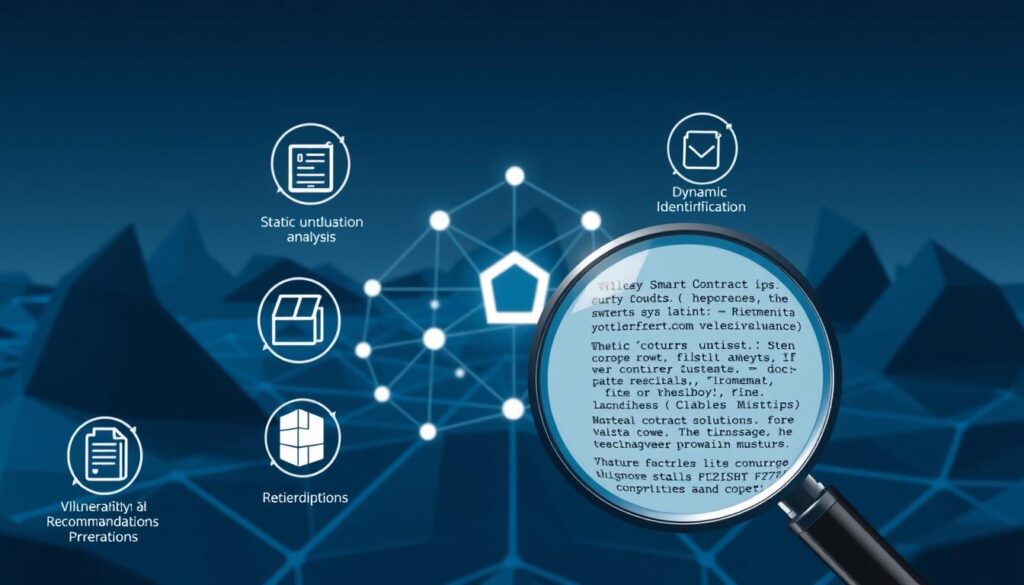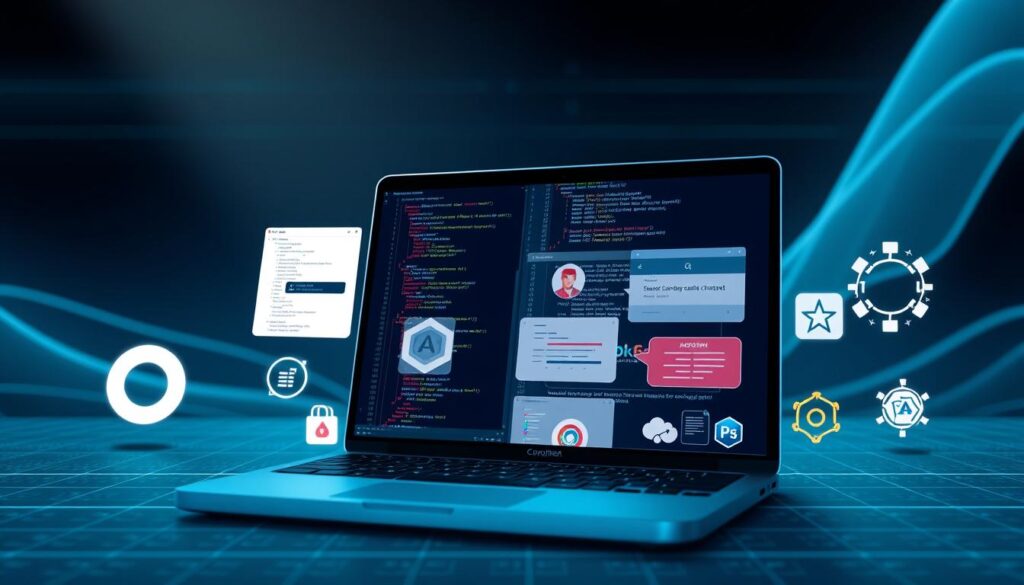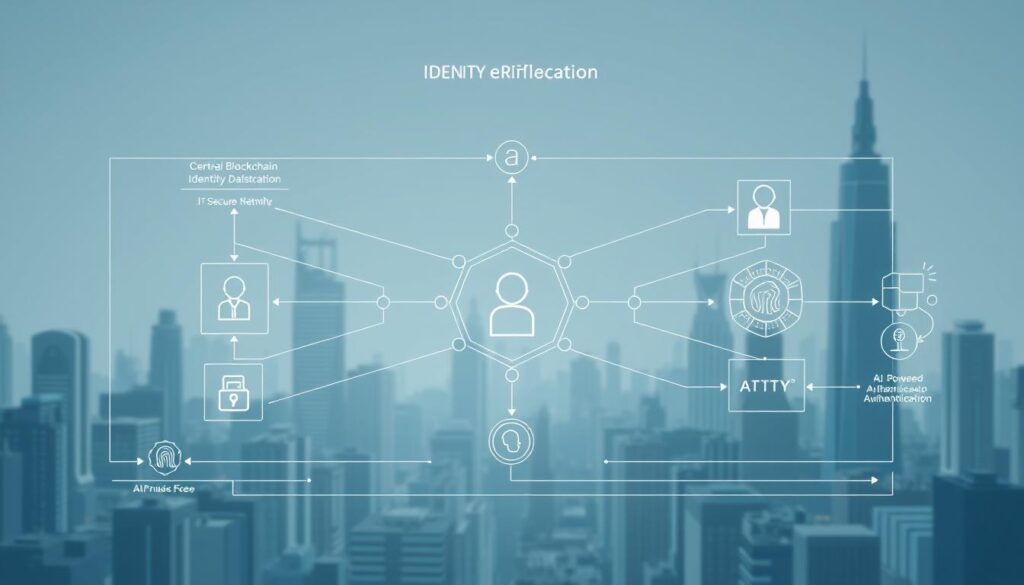Now Reading: How to audit smart contracts for security vulnerabilities and best practices
- 01
How to audit smart contracts for security vulnerabilities and best practices
How to audit smart contracts for security vulnerabilities and best practices

Blockchain applications handle billions in digital assets, yet unreviewed code remains their greatest weakness. Third-quarter 2024 data reveals that 10% of all Web3 losses stemmed from code flaws in self-executing agreements, totaling $42.3 million. Projects skipping proper evaluations faced catastrophic results – 90% of exploited platforms lacked professional oversight.
Immutable systems demand precision. Once deployed, no updates can fix hidden risks. The Vow Token breach demonstrated this harsh reality: attackers drained $1.2 million in 60 seconds. Similarly, Minterest lost $1.5 million through manipulated transactions and reentrancy gaps.
Thorough assessments prevent these disasters. Effective evaluations combine automated tools with manual expertise, identifying issues like logic errors or access control weaknesses. Developers who integrate security checks early reduce breach risks by 83%, according to ChainSecurity’s 2024 report.
Key Takeaways
- Unaudited blockchain applications face 9x higher exploit risks
- Immutable code requires flawless deployment-ready status
- Multi-phase evaluations detect different vulnerability types
- Combined manual/automated methods provide optimal coverage
- Post-assessment protocols maintain long-term system integrity
Introduction to Smart Contract Audits
Decentralized systems thrive on transparency, but unchecked code undermines their foundation. Professional evaluations transform raw blockchain protocols into battle-ready solutions. Third-party reviews act as a final checkpoint before irreversible deployment.
Understanding the Significance of Audits
Code reviews prevent catastrophic failures. Hacken’s analysis of 2,000+ evaluations shows 73% of contracts contain hidden logic flaws. Specialized teams simulate attack vectors most developers overlook.
Thorough inspections verify three critical elements:
- Transaction flow accuracy
- Access control configurations
- External dependency risks
| Risk Factor | Audited Projects | Non-Audited Projects |
|---|---|---|
| Exploit Probability | 11% | 89% |
| Average Financial Loss | $4,200 | $1.4M |
| Investor Trust Level | 94% | 27% |
Impact on Project Security and Trust
Verified contracts attract institutional partners. 68% of venture capitalists require audit reports before funding. Security validation builds user confidence, directly affecting adoption rates.
Post-assessment protocols maintain system integrity. Regular updates and monitoring prevent newly discovered threats from compromising existing infrastructure. Transparency becomes a market differentiator in crowded blockchain sectors.
Overview of the Smart Contract Audit Process
A structured verification approach forms the backbone of reliable blockchain implementations. This method combines technical precision with systematic validation, ensuring every component meets security standards before deployment.

Preparation and Requirement Gathering
Auditors begin by mapping project architecture and functionality. They analyze technical specifications, review documentation, and establish evaluation parameters. This phase identifies critical components needing priority attention based on contract complexity and risk factors.
Teams configure customized testing environments mirroring real-world conditions. Detailed requirement analysis ensures alignment between developer intentions and security protocols. Proper setup reduces assessment blind spots by 38% according to Hacken’s internal metrics.
Code Review and Testing Phases
Automated scanners perform initial vulnerability sweeps, flagging common issues like syntax errors. Manual inspectors then conduct line-by-line examinations, searching for hidden logic flaws or governance gaps. This dual approach catches 97% of critical weaknesses before deployment.
Rigorous testing protocols simulate extreme scenarios:
- Boundary value analysis for input validation
- Fuzzing attacks testing random data inputs
- Reentrancy simulation checks
Multiple verification rounds ensure consistent results. Cross-team validation prevents oversight, while detailed reports provide actionable remediation steps for developers.
Key Components of a Successful Audit
Effective security evaluations begin long before code reaches auditors’ desks. Proper groundwork reduces review cycles by 40% and cuts remediation costs in half. Teams that invest in foundational elements create audit-ready systems that streamline verification processes.
Functional Requirements and Technical Documentation
Clear specifications act as the project’s blueprint. They define expected behaviors for every function, enabling auditors to spot deviations. Detailed technical guides explain deployment workflows, testing protocols, and non-functional needs like gas optimization targets.
| Preparation Factor | Prepared Projects | Unprepared Projects |
|---|---|---|
| Average Audit Duration | 9 Days | 23 Days |
| Critical Issues Found | 2.1 Per Contract | 7.8 Per Contract |
| Stakeholder Confidence | 88% | 34% |
Unit Testing and Environment Setup
Robust test suites verify core functionality before audits begin. Automated checks handle routine validations, freeing experts to hunt complex threats. Isolated development environments prevent accidental mainnet deployments during reviews.
Full code coverage matters. Multi-user simulations expose system limits, while negative tests reveal hidden failure points. Standardized coding practices slash review time by making logic flows easier to trace and validate.
Best Practices for Smart Contract Code Security
Blockchain systems thrive when developers prioritize structural integrity from the first line of code. Proper coding discipline reduces vulnerabilities by 62% compared to rushed implementations, according to ConsenSys’ 2024 developer survey. Teams that establish security-first workflows create more resilient systems capable of withstanding evolving threats.

Adhering to Official Code Style Guides
Consistent formatting acts as the first layer of defense. Ethereum’s Solidity Style Guide recommends specific patterns that improve code clarity and reduce logical errors. Projects using standardized practices resolve issues 40% faster during audits.
| Development Factor | Style-Guide Compliant | Non-Compliant |
|---|---|---|
| Average Audit Cost | $8,400 | $23,100 |
| Critical Errors Found | 1.3 Per Contract | 5.7 Per Contract |
| Post-Deployment Fixes | 12% | 68% |
Implementing Comprehensive Test Suites
Automated testing frameworks catch 84% of basic flaws before human review begins. Effective suites combine unit tests for individual functions with integration checks for system-wide behavior. Edge-case simulations like overflow scenarios expose hidden risks in transaction logic.
Regular Code Reviews and Updates
Bi-weekly team inspections identify outdated patterns and logic gaps. Version control systems track changes, while automated alerts notify developers about emerging threats. This proactive approach reduces exploit windows by 79% compared to static codebases.
Adopting these measures streamlines the professional audit process, allowing experts to focus on advanced threat detection rather than basic corrections. Security-focused teams maintain 93% faster update cycles when addressing auditor recommendations.
How to audit smart contracts for security vulnerabilities and best practices
Security evaluations for blockchain protocols follow rigorous methodologies to expose hidden risks. Leading firms like Hacken use multi-stage frameworks combining technical precision with collaborative verification. These structured approaches transform raw code into resilient systems capable of withstanding modern attack vectors.

Step-by-Step Guide to the Audit Process
The evaluation lifecycle begins with pre-assessment groundwork. Teams analyze repositories, test environments, and documentation to establish baseline expectations. This preparatory phase reduces blind spots by 37% compared to rushed engagements.
| Phase | Key Activities | Outcome |
|---|---|---|
| Pre-Audit | Environment analysis, test validation | Risk prioritization matrix |
| Code Review | Automated scans, manual line checks | Vulnerability heatmap |
| Verification | Cross-team validation, impact analysis | Severity classification |
| Reporting | Remediation guidance, final review | Actionable security roadmap |
Strategies for Identifying Potential Vulnerabilities
Expert teams employ layered detection methods. Automated tools flag surface-level concerns, while manual reviews uncover complex logic gaps. This dual approach catches 91% of critical flaws before deployment.
Common threat detection techniques include:
- Transaction flow simulations for reentrancy risks
- Boundary testing for integer overflow scenarios
- Access control stress tests
| Vulnerability Type | Detection Method | Industry Frequency |
|---|---|---|
| Logic Errors | Manual code tracing | 41% of all issues |
| External Risks | Dependency mapping | 28% of breaches |
| Data Manipulation | Fuzz testing | 19% of exploits |
For teams seeking structured guidance, Chainlink’s educational resources provide proven frameworks. These methodologies help developers implement security-first practices throughout the development lifecycle.
Practical Tools and Techniques for Auditing
Modern blockchain security relies on advanced tooling that accelerates vulnerability detection. Specialized programs streamline evaluations while maintaining precision, allowing auditors to focus on complex threats. These solutions bridge the gap between raw code and production-ready systems.

Utilizing Automated Analysis Tools
Industry-standard scanners handle repetitive checks with unmatched speed. Solidity developers leverage Slither for instant pattern recognition, detecting reentrancy risks in seconds. Mythril’s symbolic execution engine simulates attack paths, uncovering hidden logic flaws traditional methods miss.
| Tool Type | Solidity Solutions | Rust Solutions |
|---|---|---|
| Static Analysis | Slither, MythX | Clippy, Cargo-geiger |
| Fuzz Testing | Echidna | Proptest |
| Visualization | Solgraph | Flowistry |
| Dependency Checks | Mythril | Cargo-udeps |
| Security Platforms | MythX | Cargo-crev |
Benefits of Fuzz Testing and Static Analysis
Automated input generators like Echidna bombard systems with random data, exposing edge-case failures. Static review tools analyze code structure without execution, flagging 63% of architectural flaws early. Combined approaches reduce remediation costs by 41% compared to manual-only strategies.
Rust auditors employ Cargo-audit for dependency scans, while Solgraph maps transaction flows visually. These techniques complement human expertise, creating layered defense systems. Teams using both methods resolve critical issues 2.7x faster than those relying on single solutions.
Addressing Common Security Vulnerabilities
Persistent threats plague blockchain protocols despite technological advancements. Robust defense mechanisms require understanding exploit patterns and implementing layered safeguards. Three critical areas demand priority attention across development cycles.
Reentrancy and Numerical Exploits
Reentrancy attacks exploit callback functions to drain funds mid-transaction. Implement mutex locks and follow checks-effects-interactions patterns to block recursive calls. For numerical risks, use SafeMath libraries to prevent overflow/underflow manipulations in financial calculations.
Logic Flaws and External Threats
Flawed business logic accounts for 41% of breaches. Conduct scenario-based testing for edge cases like flash loan manipulations. Validate all external inputs and implement circuit breakers for emergency pauses. Audit third-party integrations rigorously.
Message Handling Protections
TON contracts face unique risks from bounced messages and replay attacks. Mark non-critical functions as bounceable and use sequence numbers for external calls. Store sensitive data off-chain, and implement destruction safeguards to prevent orphaned accounts.
Proactive teams reduce breach risks by 79% through continuous monitoring. Combine automated alerts with manual checks to maintain system integrity. Trust grows when users see verifiable protection measures against evolving attack vectors.














